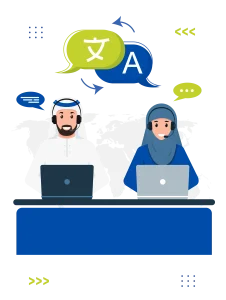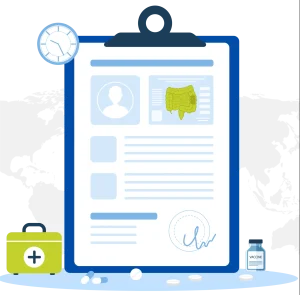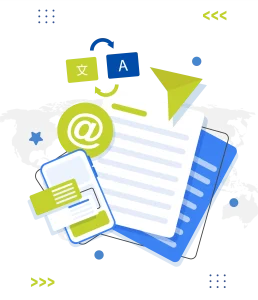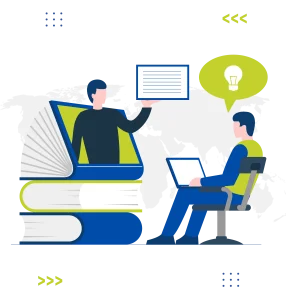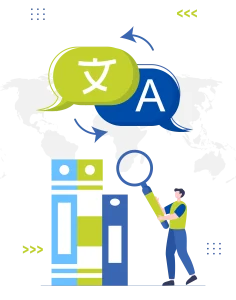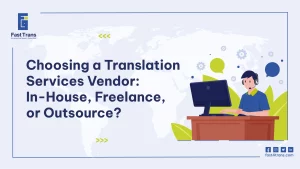In our normal day, we come across many kinds of technical writings that are often left unnoticed. On our phones, we usually do not think about who wrote the manual for each software update, or who took the time to write a detailed user manual for each electronic device present in our homes. Technical writing is present in so many different fields, it is even present in student textbooks, or in online content that we check daily.
What is referred to as technical encompasses many things, and beyond technical writers, some technical translators make sure this information can cross borders of language and culture and be accessible to users when needed.
In this article, we shall have a sneak peek into the world of technical translation, whether you are looking to embark on a new career, curious, or on the hunt for a technical translator for your project.
What is Technical Translation
Technical translation refers to translating texts that require knowledge of a specialized field such as (science, engineering, Tech, aerospace, pharmaceuticals, manufacturing industry, healthcare…etc.) along with excellent translation skills.
For example, the translation of a scientific academic paper requires advanced awareness of the jargon of the scientific field, while simple medical content does not necessarily require that degree of specialty.
The field is in demand because, with the growth of businesses worldwide, technical language can be seen everywhere either in the digital world of software applications, or in user guides, knowledge bases, and academic journals.
Generally speaking, the demand for technical translation is higher compared to other types of translations, while the supply remains short of qualified translators. It is a field that is more time-consuming, requires impeccable accuracy, and is flooded with challenges and growth.
Why technical translation matters
Being essential for all industries; Technical translation is vital because businesses need quality translation for their documents which could be patents, user manuals, or safety instructions.
Compliance and Legal Requirements: Many businesses get overwhelmed by the cost of technical translation and think they can get away with it. But the fact is, technical translation is necessary especially when the business is trying to meet international standards and in so doing,
Facilitating International Collaboration.
This kind of translation is expedient for businesses because it facilitates an improved customer experience.
Accuracy: Since technical documents contain jargon and complex information, technical translators make sure to simplify the language for customers while preserving the intended meaning.
Quality: Technical documents involve industries like aerospace of medical ones like pharmaceuticals, where a high degree of accuracy and quality need to be consistent throughout. Therefore, an experienced technical translator is part and parcel of that.
Types of Technical Translation
Types of technical translation vary across domains. Technical documents that support a medical manufacturing process will be different in format and subject matter from the documentation of a software development project.
User Manuals:
This one is probably the most common type of technical translation, and it is undoubtedly crucial for businesses trying to seek customer satisfaction in the market. A technical translator handling a user guide goes beyond just rendering from one language to another but localizing the entire user and simplifying it.
Patents
To guarantee the rights of the product’s creator. Patents are also important in the international supply chain to ensure the integrity of stakeholders.
Production Handbooks:
Similar to user manuals but dedicated to employees and workers to ensure quality and make sure everyone is on the same page in the production process.
eLearning videos and Courses
This is a process of localizing and translating heavily technical training material for your employees/ trainees.
User Research
It’s a no-brainer that user research is expedient for businesses and their growth, translating it becomes equally important.
Contract Translation:
This might sound like legal translation, and many of the technical translations will intersect with legal ones, yet even in contracts and reports, there is a need for technical precision.
Maintenance Manuals: Includes information about machinery, how it is set up, and how it functions.
Scientific, Engineering, and Technical Articles:
Educational content, either academic or not, that requires specialized knowledge in a specific field is also considered technical translation.
The scope is extensive, it could also include any of the below types:
- Articles on manufacturing and engineering topics
- Safety data sheets
- CAD Drawing translation
- Compliance documents
- Product labels, and product catalogs
- Technical studies and reports
- Educational textbooks
- Website localization
How technical translation works
As aforementioned above, a technical translator is required to be well aware of the jargon and terminology of their specialized field, along with their professional translation skills. In this section, we discuss how technical translation can be handled by the help of the translator alone, or along with technological features.
Human Translation
A human translation is optimal for localization, and accuracy including avoiding contextual errors and ambiguity. However available technical translators could need more time, effort, and cost to get the project done; keeping in mind that the technical translation field is competitive.
Machine Translation & Machine Translation Post Editing MTPE
Although they are not meant to replace the translator, Machine translation and its tools make the task a lot easier and faster, let alone more cost-effective.
Technical translation could also make great use of translation memories (TM), and Automated Quality Assurance to guarantee consistency with translating terminologies.
MTPE combines Human and Machine translation by letting the machine do the tough part and then allowing for a human linguist/translator/editor to review it and make changes.
Preparing for Translation
Moreover, from the end of a company or a client, a process of project preparation and market research needs to be done. Whether you are documenting a manual, user guide, or online content, a huge part of the quality of the target translation relies on writing quality source text.
In addition to this, you might need to prepare material such as references for your translator and address the tone of voice dedicated to your target audience before they embark on the project.
Traits of a Technical Translator
- Up to date with field jargon and terminologies
- A great researcher
- Has an eye for detail: this comes in handy with dealing with technical documents that contain lots of numbers.
- Interdisciplinarity: because technical translation in its essence requires knowledge of different fields like law, or economy, and often intersects with other types of translation like legal or medical.
- Uses Computer Assisted Translation (CAT) tools.
- Great command of cultural nuances in his or her language pair.
- Aware of technical abbreviations, jargon, and acronyms.
- Keeps a glossary of terminology to improve consistency throughout.
Technical translation vs Literal translation
Technical translation and literal translation are two different approaches.
The former focuses on accuracy in delivering specialized content. As mentioned above, it caters to medical, engineering, manufacturing, aerospace, and content of the like.
The main task of a technical translator is to deliver the exact meaning of the source text to the target readers, in doing so, they can paraphrase, or reword to simplify the highly technical and specialized language.
Moreover, the process of technical translation involves localization and rendering Cultural contexts and nuances.
However literal translation is quite different from this because it only focuses on a word-for-word translation. You can think of it in the same manner as Google Translate because it takes it word-for-word with little contextualization.
Although Literal translation could be sometimes associated with negative connotations, meaning a poorly translated text, it’s needed for a specific audience. Choosing between technical or literal translation depends on the audience, the source text, and many other factors.
Literal translation also could work well with texts that do not need any kind of localization like a source text written in a simple language.
Common Technical Document Translation Materials
Like other translation fields, technical translation is not always plain written text that needs to be translated, the source material itself could come in different shapes, and tone of voice.
We have already mentioned patents, Patents refer to copy and ownership rights, and they have their own way of being written or translated.
For instance, they must comply with each country’s requirements. It is meant to give credit to the person without revealing information about their product. Therefore, a patent translator needs to be careful with that.
Software strings
Another type of material is Software Strings. It is entirely different from patents.
Software string translation or localization might require the translator to work on coding formats like resx, or Java properties. They are also required to provide context for each string.
It is a highly technical process that involves lots of testing to make sure that the user interface is accurately localized.
The key challenges in technical translation
- Knowledge of terminology
- Always staying up to date with new emerging technologies that will require new terminology.
- Localization challenges for each target audience.
- Abbreviations
- Attention to digits and numbers.
- Terminology related to new technologies.
- Complex documents with graphs, figures, numbers, and calculations in addition to technical text.
- A mixture of specializations is required, such as legal, aviation, engineering, etc.
- Complex document structures.
- In the case of intellectual property rights (IPR) patents that we mentioned above, translators need to master a very specific and highly regulated language.
- Challenges with layout because the word density could increase or decrease from one language to another in the translation process.
- The simplest error could result in penalties, fines, or even lawsuits.
How localization technology can streamline technical translation
We’ve discussed the recurrent challenges of technical translation. In this section, we’ll have a look at how to make those challenges easier with the help of technology.
Localization technology in its broad sense refers to different tools and resources that are present online in the form of web, desktop software applications, or mobile applications, all of which make translation a smoother experience.
Starting with Translation Management Systems (TMS) that help in automating the process of translation, and organizing tasks. You can think of CAT tools that have Translation Memory (TM) which is the part responsible for automating repetitive tasks. You can also think of TMS as encompassing Quality Assurance, and Machine Translation tools.
How is this TMS beneficial for technical translation?
-Automating repetitive tasks like extracting the content only out of the technical source text.
-Aids in consistency because it keeps a reservoir of all important technical terminologies.
-Notices what the human eye fails to notice: (typos, grammatical errors, numbering…etc.) by running automated quality assurance.
-Combining the best of the two worlds because it allows for machine intervention next to the expertise of the human translator.
How Fast Trans helps with technical translation?
Are you looking for professional technical translators with years of experience to assist you with translating technical documents?
Fast Trans offers technical translation services among other array of translation services. This ranges from safety manuals, user guides, and machinery specifications to other large technical projects. In doing so, Fast Trans team are checking all of the four necessities: speed, professionalism, accuracy, and affordability, depending on a great time working round the clock to satisfy the huge demand for technical translations.



